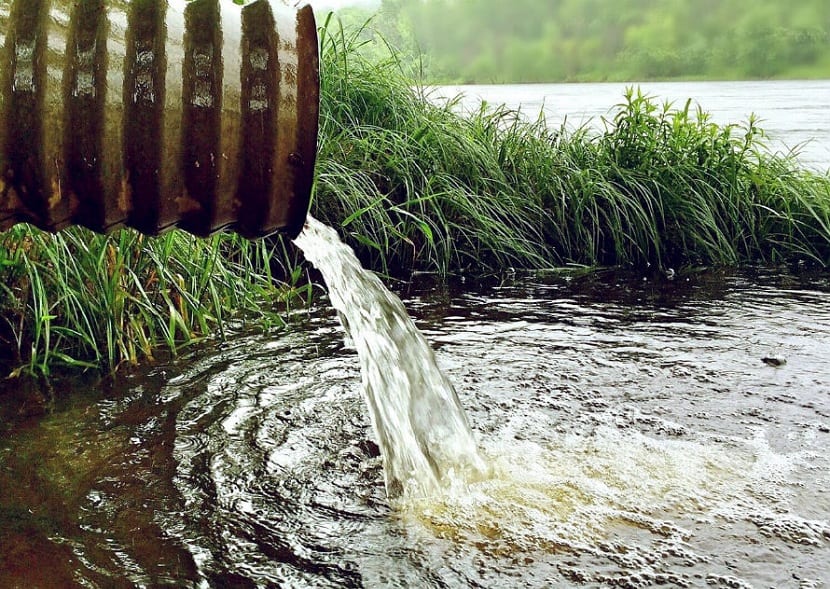
Do you know the eutrophication of water? There are many environmental problems related to water pollution. We define water pollution as the loss of the natural characteristics of water and its composition due to external agents, whether natural or artificial. There are many types of pollutants that are capable of modifying, altering and degrading the intrinsic characteristics of water. As a result of water pollution, it loses its functionality in ecosystems and is no longer drinkable for humans, in addition to becoming toxic.
Among the types of water pollution that exist today we are going to talk about eutrophication. Water eutrophication is a natural process in aquatic ecosystems, formed by the enrichment of nutrients produced by excess organic matter discharged into rivers and lakes by human activities. What problems does the eutrophication of water unleash both for man and for natural ecosystems?
Definition of water quality

To start talking about eutrophication of water (as we have mentioned before, it is a type of water pollution) we have to define, according to current legislation, what is a water in good condition.
We define water quality as the set of physical, chemical and biological parameters that this water presents and that has that allow the life of the organisms that live in it. For this, it must have several characteristics:
- Be free of substances and microorganisms that are dangerous for consumers.
- Be free of substances that give it unpleasant characteristics for consumption (color, turbidity, smell, taste).
In order to know the state in which the water is, we have to compare the parameters obtained after being analyzed in the laboratory with some water quality standards. These standards are imposed by Directive 2000/60 / EC of the European Parliament and the Council, which establishes a community framework for action in the field of water policy, better known as Water Framework Directive. This Directive aims to achieve and maintain the Good ecological and chemical status of water.
Eutrophication of waters
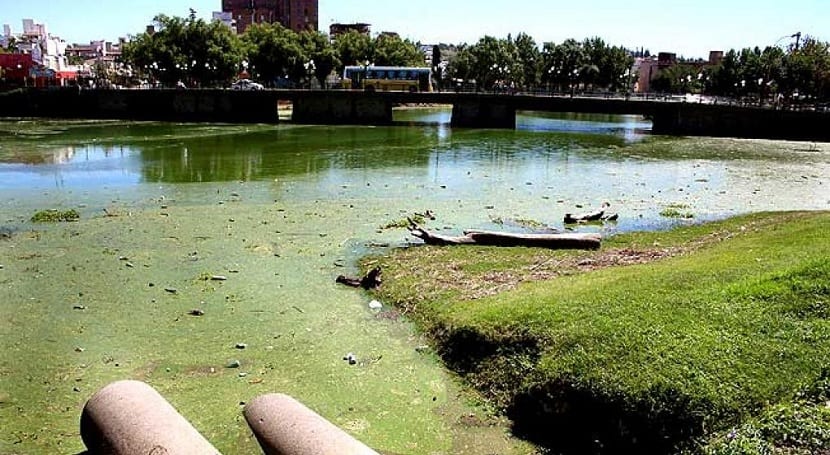
In the last 200 years, man has accelerated eutrophication processes, modifying both the quality of the water and the structure of the biological communities that live in it.
Eutrophication produces a massive growth of microalgae that dyes the water green. This color causes sunlight to not enter the lower layers of the water, so the algae at that level do not receive light to carry out photosynthesis, which leads to the death of the algae. The death of the algae generates an extra contribution of organic matter so that the place becomes rotten and a reducing environment (this means an environment low in oxygen).
Consequences of eutrophication of waters
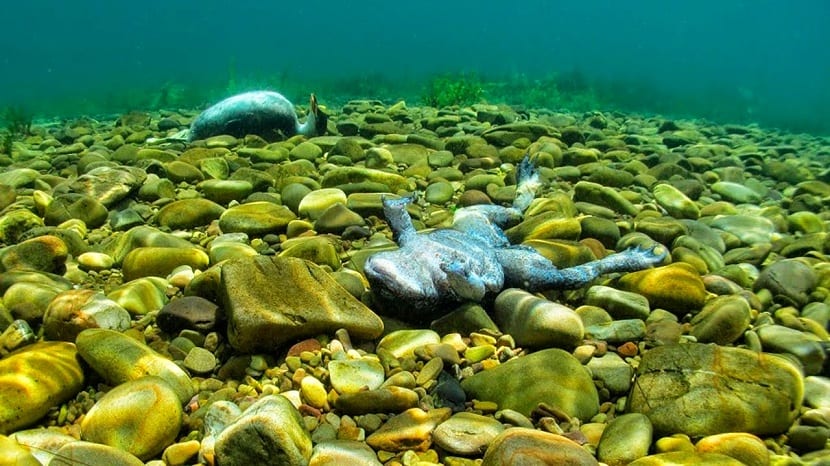
When there is eutrophication, the water considerably loses the potential uses to which it is destined and it also induces the mortality of animal species, the decomposition of the water and the growth of microorganisms (mostly bacteria).
In addition, on many occasions, microorganisms become a risk to human health, as is the case with water-borne pathogens.
Eutrophication alters the characteristics of the environment of aquatic ecosystems altering the food chain and increasing the entropy (disorder) of the ecosystem. This has consequences such as the loss of biodiversity in ecosystems, an ecological imbalance, since with fewer species interacting with each other, the wealth and genetic variability decrease.
Once an area loses its potential or native biodiversity, the species that are more opportunistic proliferate, occupying the niches previously built by other species. The ecological consequences of water eutrophication are accompanied by economic consequences. The loss of drinking water and the good condition of rivers and lakes leads to economic losses.
Stages of eutrophication of waters
The eutrophication of the waters does not happen instantaneously, but has several stages as we will see below:
Oligotrophic stage

This is usually the normal and healthy state of ecosystems. A river ecosystem, for example, with an average presence of sufficient nutrients to maintain the species of animals and plants that live in it and with a sufficient irradiance rate so that the algae can photosynthesize inside it.
In an oligotrophic stage the water has a considerable transparency and in it there are animals that breathe and filter oxygen.
Nutrient supply
An abnormal supply of nutrients can be sporadic, an accident or become something continuous over time. If from time to time there is a spill that causes an excess of nutrients in the rivers, the ecosystem can recover. However, if the extra supply of nutrients begins to be continuous, explosive growth of plants and algae will begin.
There are unicellular algae that grow in the water, in the photic zone of the same. As they are photosynthetic algae, they give the water a greenish color that prevents the passage of light at depths that it previously reached. This creates a problem for those plants that are located below the photic zone, since, not getting enough sunlight, they cannot photosynthesize and die.
In addition, due to the excess of nutrients, the populations of plants and algae undergo exponential growth and, as in all natural ecosystems, the ecological balance is broken. Now the situation looks like this: a lot of nutrients for a lot of population. However, this situation cannot continue for long, mainly because populations deplete nutrients and end up dying and returning to the bottom of the river or lake.
Eutrophic stage
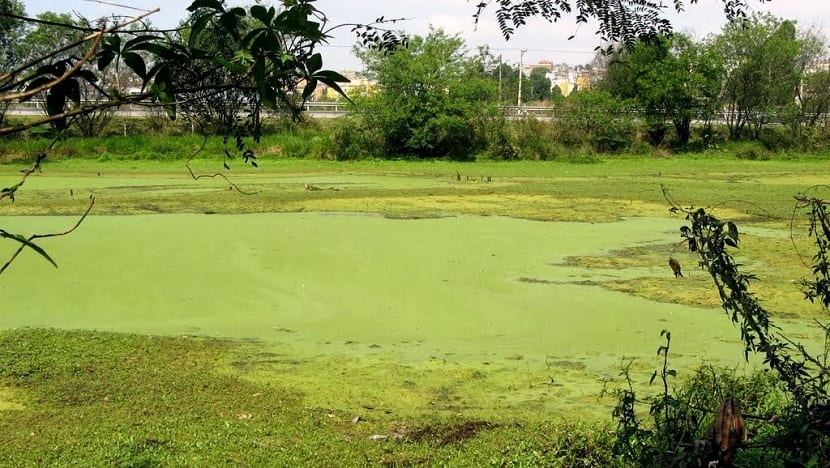
The dead organic substance at the bottom is decomposed by bacteria that consume oxygen and can also generate toxins that are lethal to plants and animals.
The absence of oxygen causes mollusks on the bottom to die and fish and crustaceans die or escape to unaffected areas. Invasive species accustomed to oxygen shortages may appear (for example, barbels and perch can displace salmon and trout).
If eutrophication is very pronounced, an oxygen-free zone can be created at the bottom of the river or lake in which the water is too dense, dark and cold and does not allow the growth of algae or animals.
Causes of eutrophication of waters
Eutrophication of waters can occur in various ways, both natural and human. Almost all cases of eutrophication of water worldwide are caused by human activities. These are the main causes:
Agriculture

In agriculture they are used nitrogen fertilizers to fertilize crops. These fertilizers filter through the earth and reach the rivers and groundwater, causing an extra supply of nutrients to the water and triggering eutrophication.
The type of eutrophication generated by agriculture is totally diffuse, since its concentration is spread over many areas and not all of it is the same.
Animal husbandry

Animal droppings are rich in nutrients, especially nitrogen (ammonia) that plants use to grow. If the excrements of livestock animals are not well managed, they can end up contaminating nearby waters.
Normally the discharges or contamination of water near livestock areas occur in a timely manner and it does not completely eutrophise the waters.
Urban waste

The urban waste that can most cause eutrophication of water are phosphate detergents. Phosphorus is another of the essential nutrients for plants, so if we add large amounts of phosphorus to the water, the plants will proliferate excessively and cause eutrophication.
Industrial activity
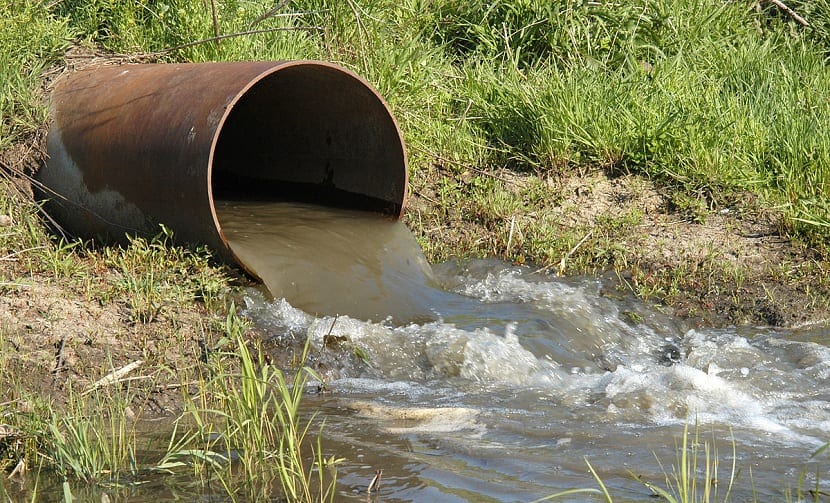
Industrial activity can also be the source of nutrients that can produce specific sources of eutrophication. In the case of industry, both nitrogenous and phosphate products can be discharged, among many other toxins.
Like the eutrophication caused by urban waste, it is eminently punctual, affecting specific areas with great intensity when it occurs.
Atmospheric pollution
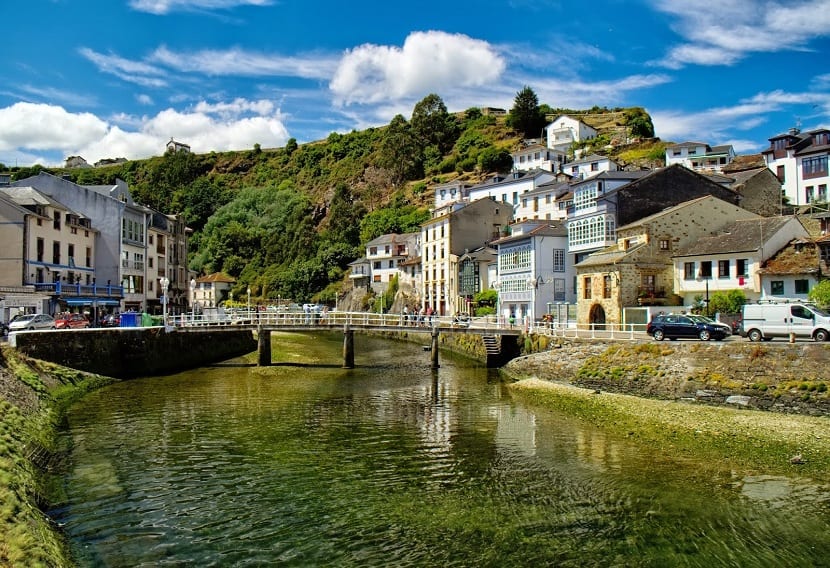
Not all greenhouse gas emissions are capable of causing eutrophication in waters. However, they do those emissions of nitrogen oxides and sulfur that react in the atmosphere and produce acid rain.
30% of the nitrogen that reaches the seas does so through the atmospheric route.
Forestry activity
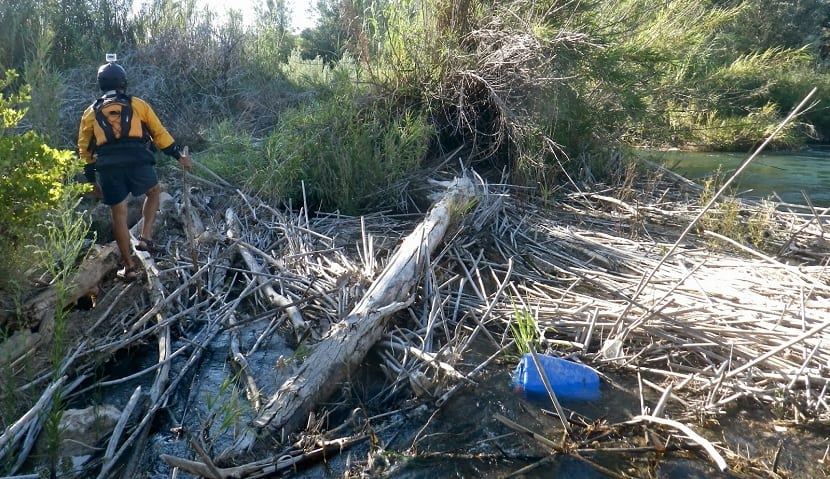
If forest residues are left in the water, when they are degraded they contribute all the nitrogen and the rest of the nutrients that the plant had. Again it is an extra supply of nutrients that forms eutrophication.
Eutrophication of water is a worldwide problem that affects all sources of fresh water. It is a problem that must be solved as soon as possible, since with climate change droughts will increase and we must safeguard all the freshwater resources available on the planet.
